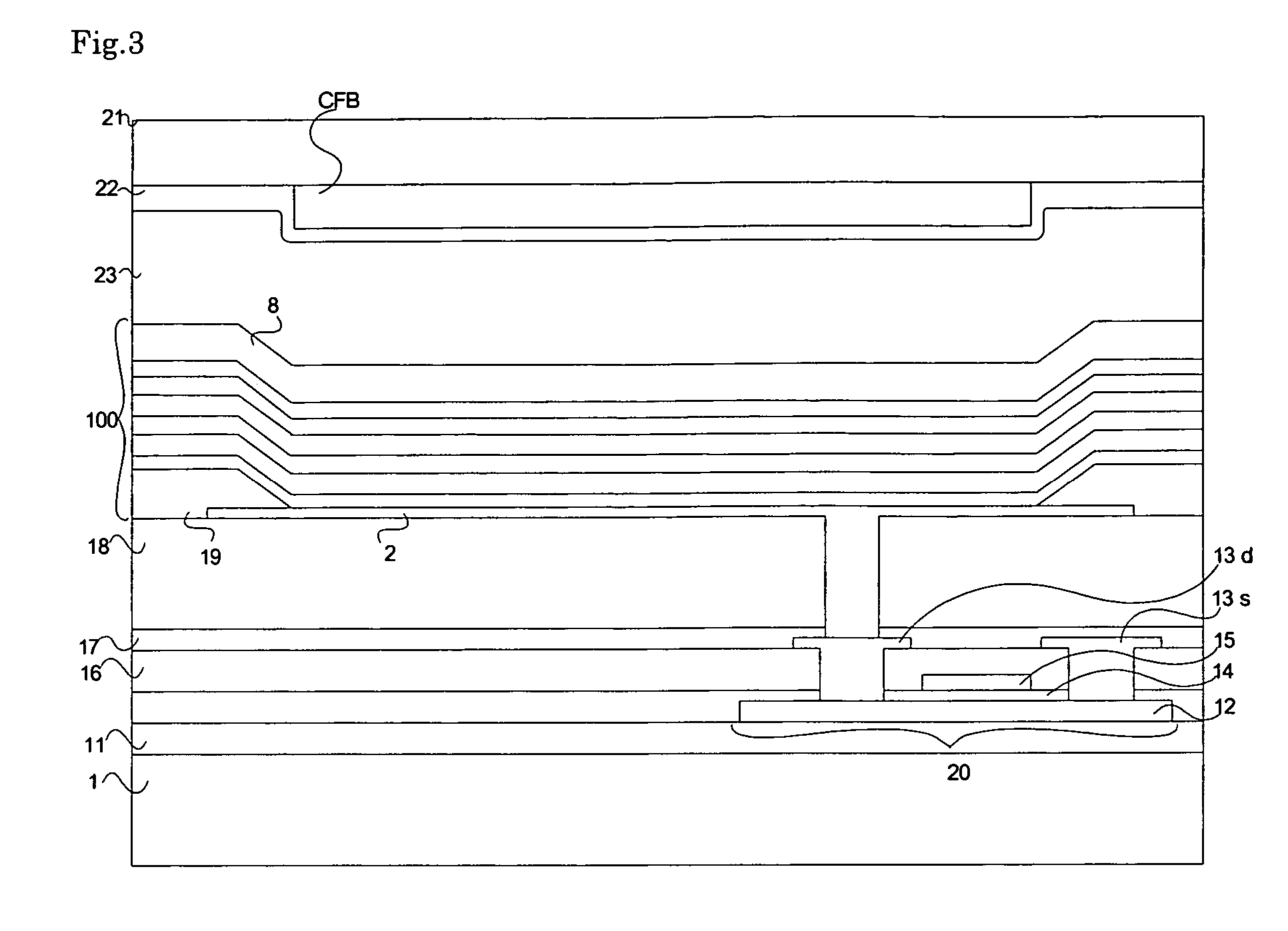Organic electroluminescent element and display device or light emitting device equipped with the same
a technology of electroluminescent elements and light emitting devices, which is applied in the direction of discharge tube luminescnet screens, natural mineral layered products, transportation and packaging, etc., can solve the problems of shortening the life of organic el elements and negatively affecting the electron transport layer of organic materials, so as to reduce the number of electrons, reduce the lumo energy level, and reduce the deterioration of the hole transport layer including the amine derivative due to electrons
- Summary
- Abstract
- Description
- Claims
- Application Information
AI Technical Summary
Benefits of technology
Problems solved by technology
Method used
Image
Examples
example 1
[0090] In Example 1, an organic EL element having the structure shown in FIG. 1 was fabricated as follows.
[0091] An indium tin oxide (ITO) layer was formed on the substrate 1 made of glass, followed by the formation of a CFx (carbon fluoride) layer on the ITO layer by a plasma CVD method, whereby the anode 2 having a double layer structure comprised of the ITO and carbon fluoride layers was formed. A plasma discharge time in the plasma CVD was 15 seconds in this case.
[0092] Further, onto the anode 2, the hole injection layer 3, hole transport layer 4, intermediate layer 10, orange light emitting layer 5, blue light emitting layer 6 and electron transport layer 7 were sequentially formed by vacuum evaporation.
[0093] The hole injection layer 3 is comprised of HAT-CN6 having a film thickness of 10 nm. The hole transport layer 4 is comprised of NPB having a film thickness of 100 nm. The intermediate layer 10 is comprised of HAT-CN6 having a film thickness of 10 nm, similarly to the h...
example 2
[0097] In Example 2, an organic EL element same as that in Example 1 was prepared, except that a film thickness of NPB used as the hole transport layer 4 was 150 nm.
example 3
[0098] In Example 3, an organic EL element same as that in Example 1 was prepared, except that a film thickness of NPB used as the hole transport layer 4 was 80 nm.
PUM
| Property | Measurement | Unit |
|---|---|---|
| energy level | aaaaa | aaaaa |
| LUMO | aaaaa | aaaaa |
| wavelength | aaaaa | aaaaa |
Abstract
Description
Claims
Application Information
 Login to View More
Login to View More - R&D
- Intellectual Property
- Life Sciences
- Materials
- Tech Scout
- Unparalleled Data Quality
- Higher Quality Content
- 60% Fewer Hallucinations
Browse by: Latest US Patents, China's latest patents, Technical Efficacy Thesaurus, Application Domain, Technology Topic, Popular Technical Reports.
© 2025 PatSnap. All rights reserved.Legal|Privacy policy|Modern Slavery Act Transparency Statement|Sitemap|About US| Contact US: help@patsnap.com



